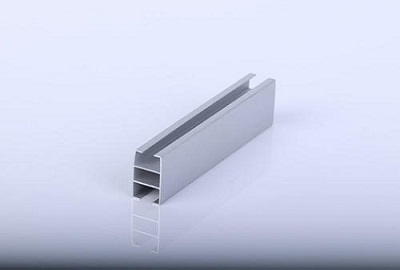Aluminum profiles are aluminum rods that are melted and extruded to obtain aluminum materials with different cross-sectional shapes. The production process of aluminum profiles mainly includes three processes: casting, extrusion, and coloring. Then, the classification standards of aluminum profiles are:
1. Aluminum profiles are classified according to surface treatment requirements:
1. Anodized aluminum
2. Electrophoresis coated aluminum
3. Powder sprayed aluminum
4. Woodgrain transfer aluminum
5. Planed aluminum (divided into mechanical planing and chemical polishing (explanation: the process of friction to make objects (such as gold) smooth) two types, of which chemical polishing is expensive and expensive)
2. Aluminum profiles can be divided into the following categories according to their uses
1. Aluminum profiles for construction and doors and windows (divided into 2 types of doors and windows and curtain walls). The industrial aluminum profile is an alloy material with aluminum as the main component. Aluminum rods are melted and extruded to obtain aluminum materials with different cross-sectional shapes, but the proportion of the added alloy is different. The mechanical properties and applications of the industrial aluminum profiles produced The field is also different. Application fields, Generally speaking, industrial aluminum profiles refer to all-aluminum profiles except for architectural doors and windows, curtain walls, indoor and outdoor decoration, and aluminum profiles for building structures.
2. Special radiator aluminum profile for CPU radiator
3. Aluminum alloy (melting point 660℃) shelf aluminum profiles, their difference lies in the different cross-sectional shapes. But they are all produced by hot-melt extrusion.
4. Industrial aluminum profile: Mainly used for automated mechanical equipment (composition: drive device, variable speed device, etc.), the skeleton of the enclosure, and the company customized mold opening according to their own mechanical equipment requirements, such as assembly line conveyor belts, elevators, and glue dispensing Machines, testing equipment, etc., are mostly used in the electronic machinery industry and clean rooms.

3. Aluminum profiles are classified by alloy
It can be divided into various types of aluminum profiles such as 1024, 2011, 6063, 6061, 6082, 7075, etc. Among them, 6 series of aluminum profiles are common. The difference between different grades is that the proportions of various metal components are different, except for the common In addition to architectural aluminum profiles such as 60 series, 70 series, 80 series, 90 series, and curtain wall series, industrial aluminum profiles do not have a clear model distinction. Most of the production plants are processed according to the actual drawings of customers.
Aluminum profile specifications Industrial aluminum profile has a wide range of applications and strong versatility. It is famous for its environmental protection, convenient assembly and disassembly, time-saving, and long service life. Industrial aluminum profiles have many varieties and complete specifications, which are suitable for various types of mechanical devices. No need to weld, easy to adjust the size, easy to change the structure. Strict dimensional tolerance and high surface finish are required. The assembly work is convenient and quick, and the productivity is high. The surface is anodic oxidation treatment, anti-corrosion, spray-free, beautiful and elegant, which can increase the added value of the product. The aluminum profile titanium gold plating process belongs to the coating technology. It adds pre-plating and electroplating process steps on the basis of the conventional titanium plating process. The aluminum profile process involves placing the activated plating parts in an aqueous solution of salt and hydrochloric acid for a chemical deal with. The density of the aluminum profile is only 2.7g/cm3, which is about 1/3 of the density of steel, copper, or brass (7.83g/cm3, 8.93g/cm3, respectively). In most environmental conditions, including air, water (or saltwater), petrochemicals, and many chemical systems, aluminum can show excellent corrosion resistance.
